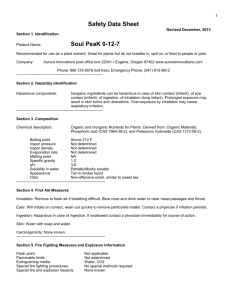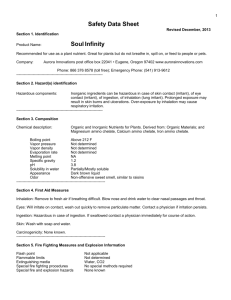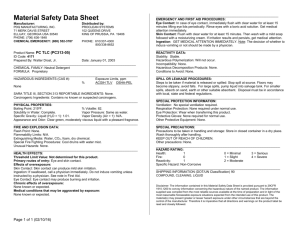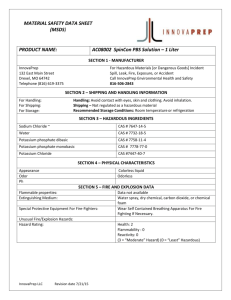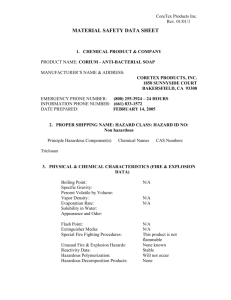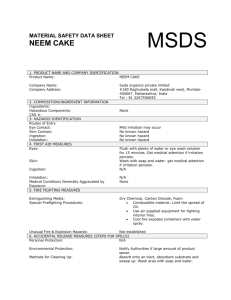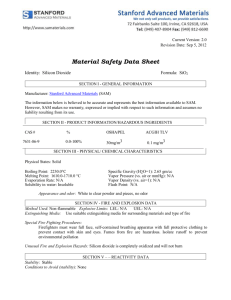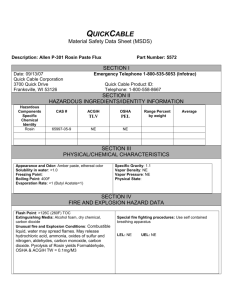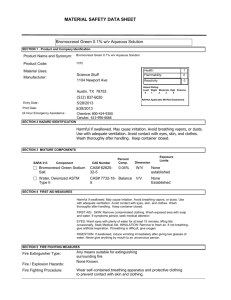Bloom
advertisement
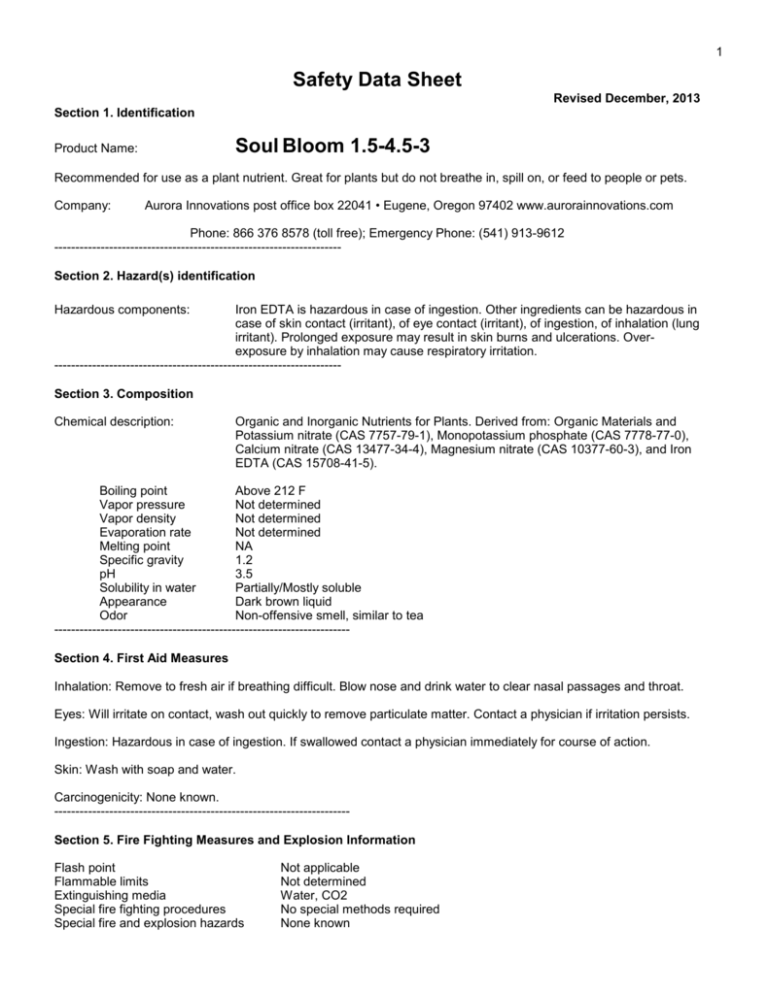
1 Safety Data Sheet Revised December, 2013 Section 1. Identification Soul Bloom 1.5-4.5-3 Product Name: Recommended for use as a plant nutrient. Great for plants but do not breathe in, spill on, or feed to people or pets. Company: Aurora Innovations post office box 22041 • Eugene, Oregon 97402 www.aurorainnovations.com Phone: 866 376 8578 (toll free); Emergency Phone: (541) 913-9612 -------------------------------------------------------------------Section 2. Hazard(s) identification Hazardous components: Iron EDTA is hazardous in case of ingestion. Other ingredients can be hazardous in case of skin contact (irritant), of eye contact (irritant), of ingestion, of inhalation (lung irritant). Prolonged exposure may result in skin burns and ulcerations. Overexposure by inhalation may cause respiratory irritation. -------------------------------------------------------------------Section 3. Composition Chemical description: Organic and Inorganic Nutrients for Plants. Derived from: Organic Materials and Potassium nitrate (CAS 7757-79-1), Monopotassium phosphate (CAS 7778-77-0), Calcium nitrate (CAS 13477-34-4), Magnesium nitrate (CAS 10377-60-3), and Iron EDTA (CAS 15708-41-5). Boiling point Above 212 F Vapor pressure Not determined Vapor density Not determined Evaporation rate Not determined Melting point NA Specific gravity 1.2 pH 3.5 Solubility in water Partially/Mostly soluble Appearance Dark brown liquid Odor Non-offensive smell, similar to tea ---------------------------------------------------------------------Section 4. First Aid Measures Inhalation: Remove to fresh air if breathing difficult. Blow nose and drink water to clear nasal passages and throat. Eyes: Will irritate on contact, wash out quickly to remove particulate matter. Contact a physician if irritation persists. Ingestion: Hazardous in case of ingestion. If swallowed contact a physician immediately for course of action. Skin: Wash with soap and water. Carcinogenicity: None known. ---------------------------------------------------------------------Section 5. Fire Fighting Measures and Explosion Information Flash point Flammable limits Extinguishing media Special fire fighting procedures Special fire and explosion hazards Not applicable Not determined Water, CO2 No special methods required None known 2 Reactivity Data Stability Stable at normal temperatures Conditions to avoid None known Incompatibility None known Hazardous decomposition None known Hazardous polymerization Will not occur ----------------------------------------------------------------------Section 6. Accidental Release Measures Contain spill to prevent discharge into the environment. Absorb spill with appropriate material and flush with water. ----------------------------------------------------------------------Section 7. Handling and Storage Skin: Avoid contact, may cause irritation. Wash with soap and water. Respiratory protection: Remove to fresh air; if breathing difficult, administer oxygen. Consult physician. Eye protection: Chemical splash goggles recommended if splash hazard possible. Safety glasses suffice otherwise. Ingestion: If swallowed contact a physician immediately for course of action. Protective gloves/clothing: Rubber or plastic recommended if contact expected. Work practices: Use good housekeeping practices. Keep containers tightly closed. Ventilation: Typically none is required. Exhaust fan recommended if breathing difficult. Incompatibility: None known. ----------------------------------------------------------------------Section 8. Exposure controls/personal protection Skin: Avoid contact, may cause irritation. Wash with soap and water. Respiratory protection: Remove to fresh air; if breathing difficult, administer oxygen. Consult physician. Eye protection: Chemical splash goggles recommended if splash hazard possible. Safety glasses suffice otherwise. Ingestion: If swallowed contact a physician immediately for course of action. Protective gloves/clothing: Rubber or plastic recommended if contact expected. Work practices: Use good housekeeping practices. Keep containers tightly closed. Ventilation: Typically none is required. Exhaust fan recommended if breathing difficult. Waste disposal method: Package material for removal to an approved landfill, or dispose of as soil. ----------------------------------------------------------------------Important: The information and data herein are believed to be accurate and have been compiled from sources believed to be current and reliable. It is offered for your consideration, investigation and verification. Buyer assumes all risks of use, storage and handling of product in compliance with applicable federal, state and local laws and regulations.
